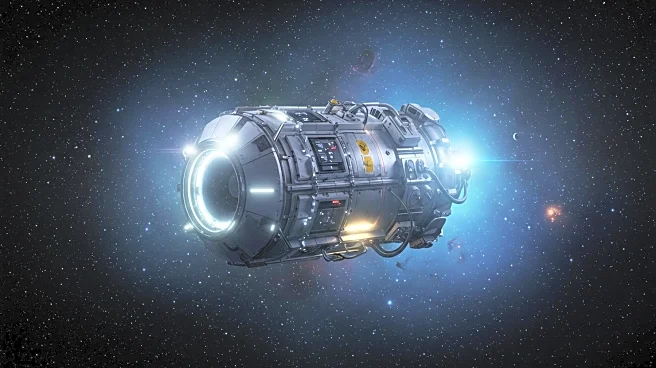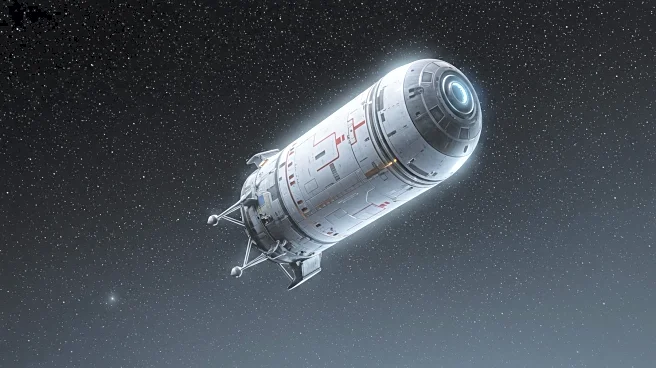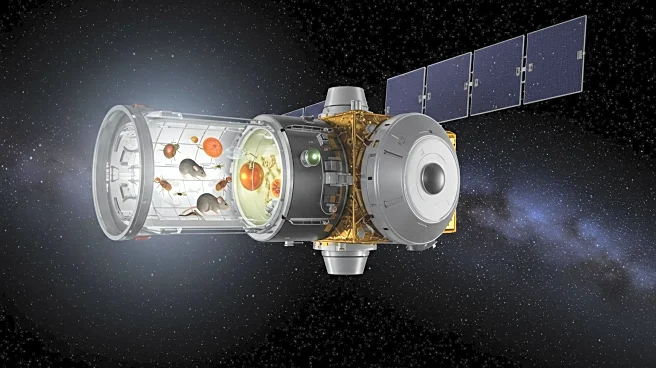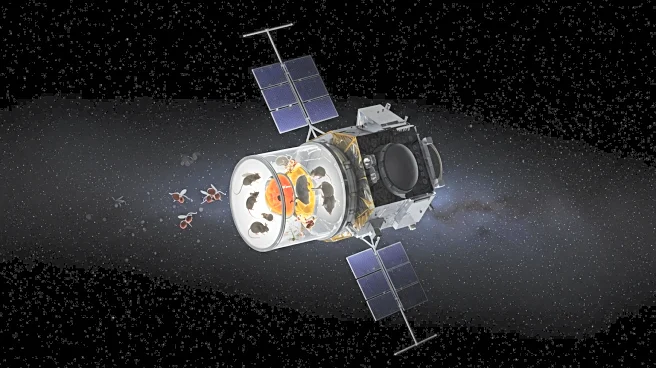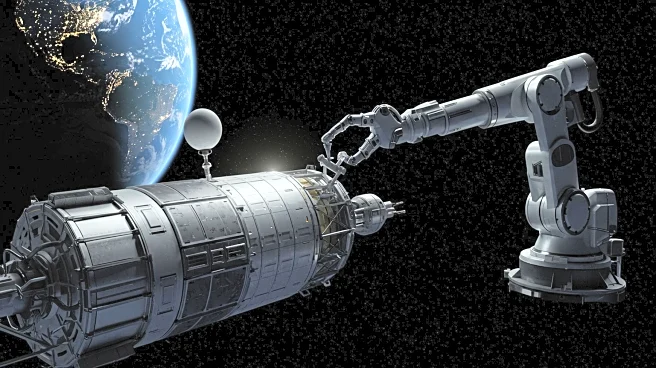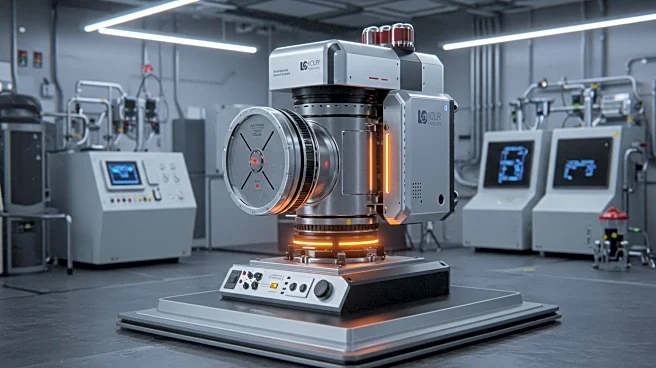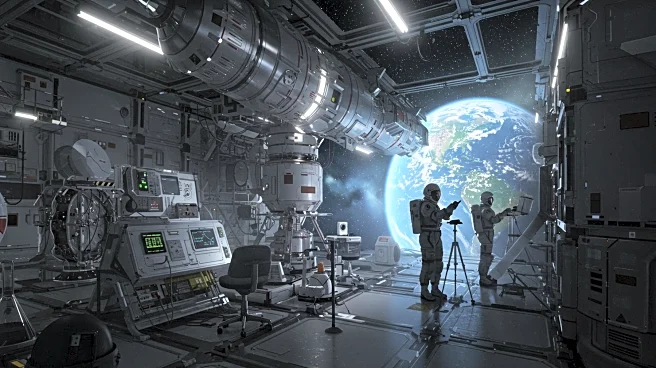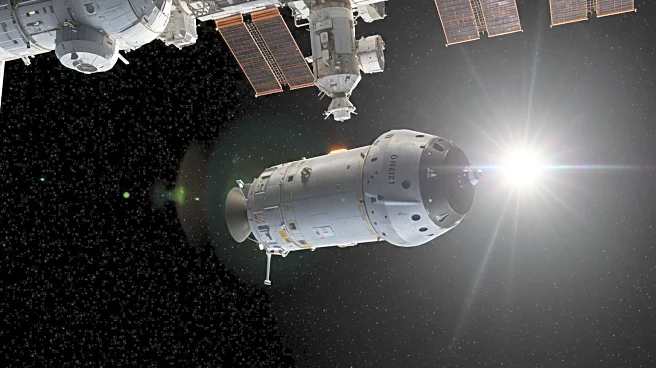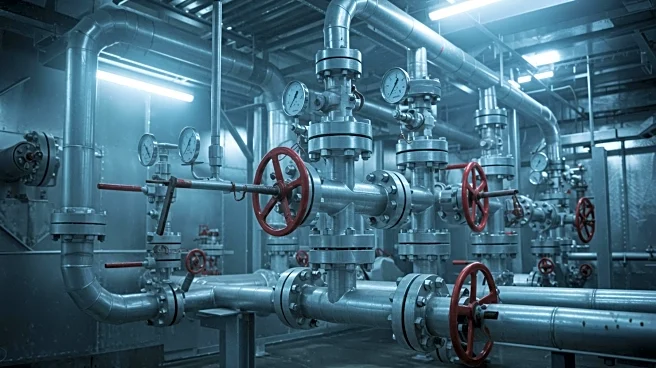What's Happening?
Russia is set to launch the Bion-M No. 2 biosatellite on August 20, 2025, from the Baikonur Cosmodrome in Kazakhstan. The mission aims to study the effects of spaceflight on living organisms, including 75 mice and over 1,000 fruit flies, during a 30-day mission. The spacecraft will expose these biological specimens to high levels of radiation to gain insights into the biological effects of space travel. Additionally, the mission will carry lunar simulants—materials mimicking the moon's surface—to assess their reaction to space conditions, aiding future lunar construction plans.
Why It's Important?
The Bion-M No. 2 mission is crucial for advancing deep-space missions and understanding the long-term impacts of space travel on human health. By studying mice, which share genetic similarities with humans, researchers can gain insights into radiation's effects on biological systems, potentially improving astronaut health management strategies. The mission's findings could also inform the design of future space missions, making long-term space travel safer. Furthermore, the study of lunar simulants is vital for future moon construction projects, where using local materials will be critical for sustainable lunar habitation.
What's Next?
Upon the mission's completion, researchers will analyze the data collected from the mice and lunar simulants to understand how space conditions affect biological and material systems. This analysis will help develop strategies to mitigate radiation risks for future missions to the moon, Mars, and beyond. The findings could lead to innovations in space health and safety, influencing the design of protective technologies for astronauts during long-duration space travel.
Beyond the Headlines
The mission highlights the importance of international collaboration in space research, as the Vernadsky Institute and the IMBP are involved in preparing the lunar simulants. The study of space radiation's impact on biological systems could also have implications for understanding radiation effects on Earth, potentially benefiting medical research and treatments for radiation exposure.


